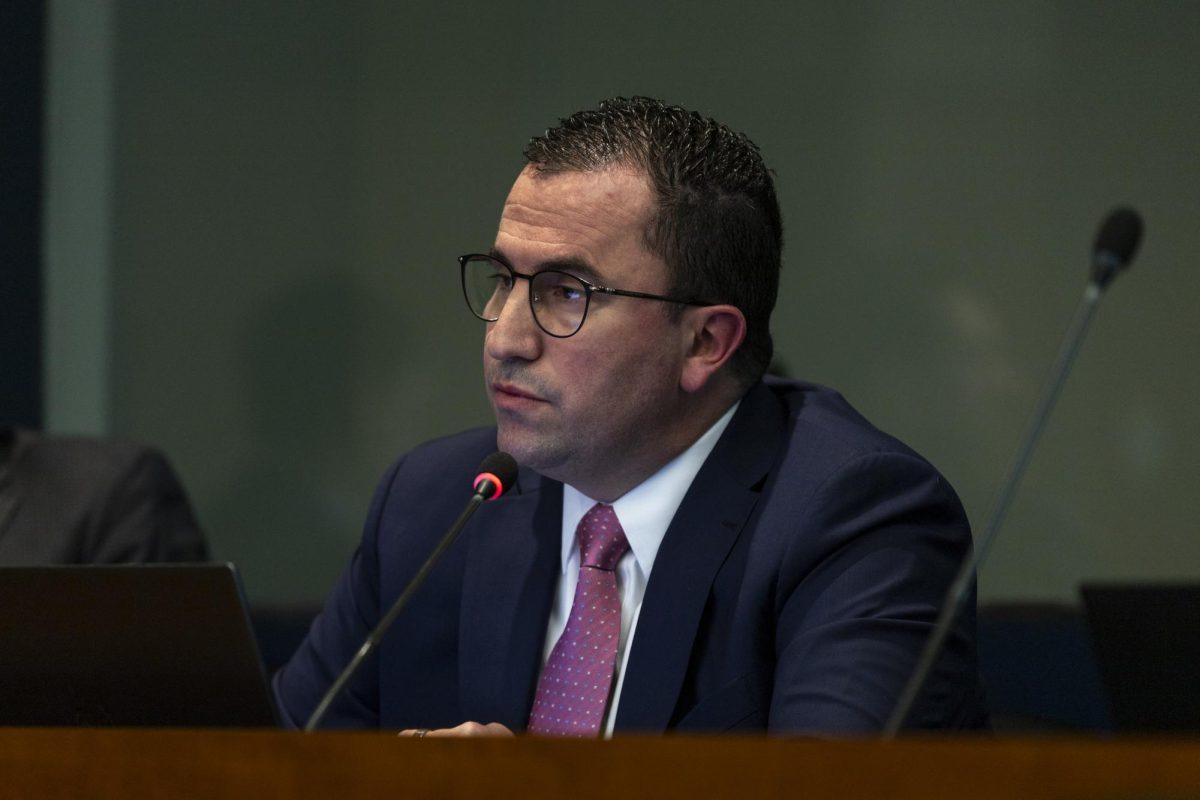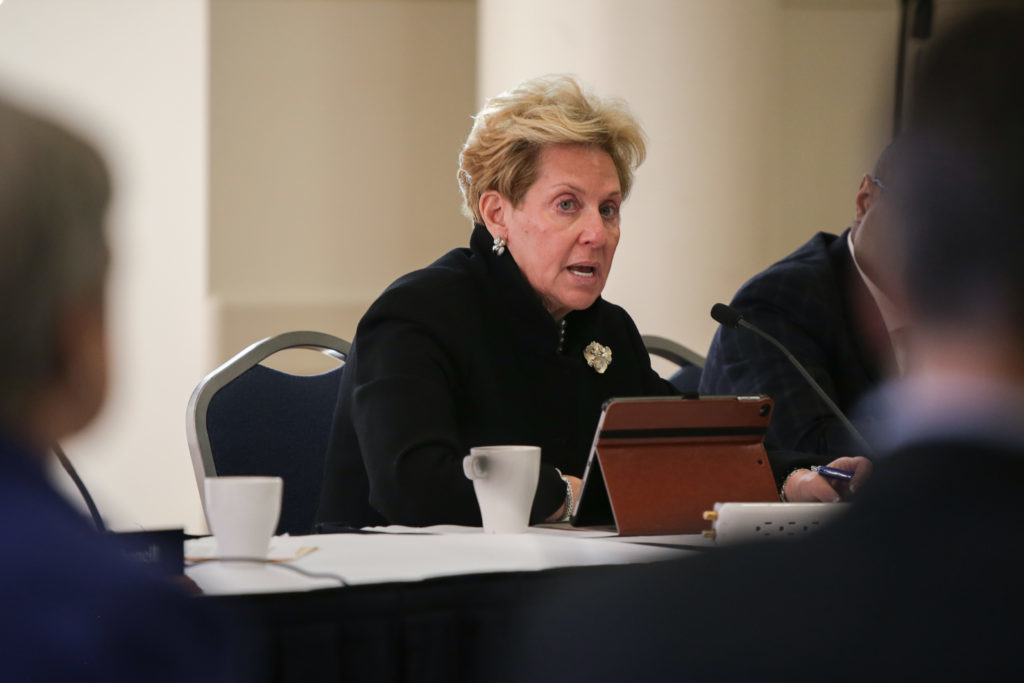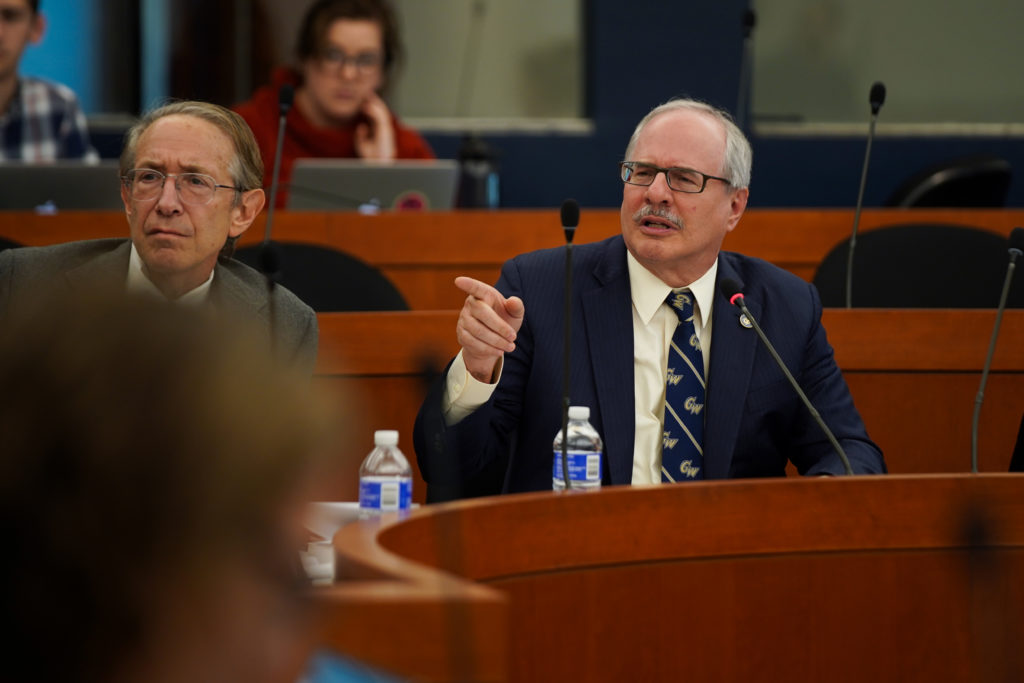GW’s diverse revenue streams helped the University weather financial losses and maintain top-rated finances over the last two years, according to credit rating agencies, which experts say are consistent with a growing use of revenue diversification in higher education.
Moody’s Investors Service and Standard and Poor’s evaluated GW’s wealth, liquidity of assets and market profile this spring and affirmed their A1 and A+ ratings, respectively — the highest ratings possible. Moody’s report states that GW’s operating performance will remain “moderate” relative to other A-rated universities due to the “persistent weak performance,” of the Medical Faculty Associates — a group of physicians who teach at the School of Medicine and Health Sciences — which has lost almost $250 million since fiscal year 2020.
“A modest track record of operating performance is related to weak financial results of the Medical Faculty Associates (MFA) practice plan,” Moody’s rating states.
GW officials expanded their control of the MFA in 2018 and the MFA has largely operated at a deficit since FY 2016.
Standard and Poor’s said GW’s enterprise risk profile is “very strong” as a research university but states that the University is burdened with nearly $2.1 billion of debt compared to the $1.3 million median for A-rated private universities’ debt.
“The rating reflects our view that the university’s financial risk profile is strong, characterized by revenue diversity but high debt,” Standard and Poor’s rating states.
Moody’s rating states that more than half of GW’s revenue in FY 2023 was produced from student tuition, which is projected to increase for FY 2024. Investment income — which is largely comprised of GW’s “sizable” real estate portfolio and accounts for almost 40 percent of GW’s wealth — will increase with the $140 million purchase of the Residences on The Avenue, per the rating.
Undergraduate tuition rose by 4.2 percent for the 2024-25 academic year, consistent with national private nonprofit university tuition increases, bringing the total cost of attendance to more than $80,000. The tuition hike marks the 20th year that officials have raised the cost of a GW education, ranging from 2.1 percent to 5 percent increases each year.
GW has been financially tuition-dependent for more than a decade, ranking second among its peer schools in tuition dependency in 2013.
Chief Financial Officer Bruno Fernandes said revenue diversification — having numerous streams of income to reduce the potential impact of one source faltering — is a “universal strategy” in higher education and business, which GW does not intentionally utilize to mitigate the MFA’s losses. He said variations in enrollment, changes in legislation and broader economic crises can impact any one revenue stream.
Higher education institutions across the nation have increasingly utilized revenue diversification as expenditures for running universities increase and leaders adopt a “business-like” approach to higher education.
He said the University’s revenues predominantly derive from student tuition, housing fees and patient service revenue, consistent with other universities that have a medical enterprise. He said the University has decreased its reliance on tuition revenue after tuition’s share of total revenue dropped by 4 percent over the past five fiscal years.
Total enrollment has steadily declined from 28,172 students in 2018 to 25,568 in 2023, according to the enrollment dashboard.
“We would not characterize the degree of diversification achieved so far as a dependence on the other revenue streams,” Fernandes said in an email.
Fernandes said the ratings reflect a strong assessment of the University’s financial health, signaling GW’s “continued strong financial position,” and indicating that the University is financially stable and well managed.
He said GW is naturally exposed to real estate investments due to its urban campus and that balance sheets of University finances reflect the investments’ “book value,” but their actual market value is much greater.
“Although real estate tends to be less liquid compared to other assets, GWU maintains considerable liquidity through investments in other asset classes,” Fernandes said.
Experts in higher education and finance said revenue diversification can help compensate for the University’s financial weak points, like the MFA, but experts said rising tuition rates create a monopoly of one revenue stream and reduce the diversity of the income streams.
James Webb, an associate professor of accounting at Hillsdale College, said a majority of universities’ income stems from tuition, donation, public funding, endowment income and other charges like housing. But he said tuition raises while other income sources stay constant will decrease revenue diversity, which can be exacerbated by enrollment declines since there are less students to pay the University.
University Controller Neena Ali said at a Faculty Senate meeting in December that GW is a tuition-dependent institution, with tuition composing 57 percent of operating revenue in FY 2023.
Webb said diverse revenue sources allow officials to steer away from projects that would drain finances and attention away from universities’ academic priorities.
“When properly diversified, administration has the leeway to reject dollars that have too many strings attached or require the institution to drift from its mission,” Webb said in an email. “The ability to say ‘No, take your money elsewhere’ is critical to staying true to mission.”
David Gras, an associate professor of strategy and entrepreneurship at the University of Tennessee, said it is common for universities to diversify their revenue streams to mitigate potential losses and maximize their gains.
He said diversification is a “double-edged sword” because it could be argued GW’s pursuit of a diverse revenue stream led them to seek nonstudent-derived income and acquire the MFA, which has resulted in the $250 million deficit.
“GW diversified into a medical business that, at present, is operating in the red,” Gras said in an email. “So, more diversification (past, present, or future) may not necessarily be (or have been) the solution.”
Gras said even if GW is forced to close the MFA due to its high deficit, the University will “certainly” be able to cover any outstanding debt from their investment in other revenue streams like tuition and fees, grants, contracts and their endowment.
The Board of Trustees reported in February that the University’s endowment, a fund to support scholarships and professorships, had increased to $2.6 billion by the end of 2023, the highest value in GW history.
He said he recommends the University focus on increasing their earnings from existing sources like tuition and fees instead of trying to expand into new markets to get themselves “out of a hole.” He said the University can do this by increasing their tuition, incentivizing professors to go after big research grants and downsizing departments that operate at a heavy loss.
“Diversification on the whole is costly and risky, so more money from a stable, predictable and fruitful source like tuition and fees gives universities options,” Gras said.
GW spent $161.87 million on federal research in FY 2022, ranking eighth among its peer institutions.
Officials downsized the Geological Sciences Program last spring after officials denied program director Catherine Forster’s request to hire a tenure-track professor. Officials will phase out the European and Eurasian Studies and Latin American and Hemispheric Studies programs over the next two academic years after low enrollment and struggle with faculty retention.
Robert Toutkoushian, a professor of higher education at the University of Georgia, said concerns over “excessive” tuition jumps to cover increasing costs to run universities have spurred revenue diversification in higher education over time.
A 2022 survey of 47 higher education institutions found that about 74 percent of respondents said one of their priorities for their institution is to seek new funding sources.
“Bringing in revenues from other sources can help to reduce the need to increase net tuition and fee revenue,” Toutkoushian said in an email.







